Thank you so much for your patience everyone. Shall we start with introductions?
I’m Mikiharu Ooiwa of GREZZO Co., Ltd.13 This wasn’t the case from the beginning, but I was tasked with the role of director for Majora’s Mask 3D. 13. GREZZO: A game development company established in 2006 based in Tokyo. After developing The Legend of Zelda: Ocarina of Time 3D, they worked on The Legend of Zelda: Majora’s Mask 3D. For more details on Ocarina of Time 3D, visit Iwata Asks: The Legend of Zelda: Ocarina of Time 3D Development Staff.
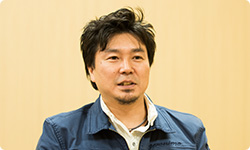
What do you mean by “tasked with”?
I requested that a director role be made mid-way through development. For a while I didn’t think there was a need for one.
Ah, I get it. At first, you thought you didn’t need a director since this game had an original to work from.
There was no director when we made Ocarina of Time 3D. But that wasn’t the case at all when we started working on this game! (laughs)
That’s right! (laughs)
Aonuma-san, I don’t think we need you to introduce yourself at this point. (laughs) So Yamamura-san, take it away.
Hi, I’m Tomohiro Yamamura of the Software Planning & Development Department (SPD). I worked as the liaison on the SPD side. My job was to compile Aonuma-san’s wishes on what he wanted to do with the game in an easy-to-understand way, tell that to Ooiwa-san at GREZZO, take Ooiwa-san’s response, review it myself to see if it was okay, then relay that info back to Aonuma-san.
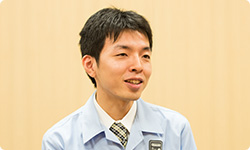
You basically worked as the interpreter even though everyone spoke Japanese.
I guess so! (laughs) I really was an interpreter.
Hi there, I’m Tomomi Sano, also from SPD. Like Yamamura-san, I worked as the Nintendo liaison for this title. Although for me, I joined during the latter half of development so most of the components were already finished. So my role was to review the existing issues with the game that were found by Mario Club14, and if there were moments where it seemed like the game was putting on a challenge too much like what they were saying just a while ago, I went over those areas from a player’s perspective and made recommendations on whether we should fix certain issues or leave them as is, since they added to the game as a part of the challenging flavour.14. Mario Club: A company that debugs and tests Nintendo games in development.
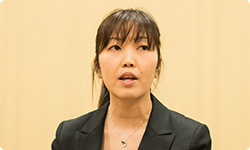
You say “from a player’s perspective” Sano-san, but that’s exactly the case since you actually played the Nintendo 64 version yourself when it was out, as one of our customers. So whenever I wondered what it would feel like from a fan, I always asked Sano-san.
I was originally a fan of the Nintendo 64 version so I played it when it was out, but… I was one of those that lost the challenge! (laughs)
You couldn’t clear the game?
Unfortunately, no.
Well, so let me ask the group: how did recreating that “challenging” game, Majora’s Mask, get started?
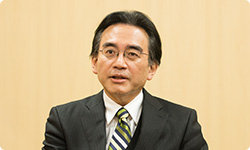
Here again, it came from Miyamoto-san. He told me one day, “Let’s release Majora’s Mask for Nintendo 3DS.” Sano-san mentioned how she lost the challenge, and I think Miyamoto-san feels quite strongly that there are quite a lot of people like her, who gave up on the Nintendo 64 version partway through the journey. He probably felt that it was such a shame how we put so much in the game, but then people weren’t able to see it all because they weren’t able to get there. Of course, we were the ones who challenged players to clear these mysteries in the first place! (laughs)
Well, it did turn from hospitality into a challenge! (laughs)
Well, when I was told that by Miyamoto-san, all I could say was, “You’re absolutely right.” An added benefit of releasing it for Nintendo 3DS was that if you get stuck somewhere in the game, you could just close the lid and put it in Sleep Mode15, so it was all the more reason to work on Majora’s Mask. However, I couldn’t just simply say, “Yes, I’ll do it.”15. Sleep Mode: This mode is when a Nintendo 3DS console is closed shut while it is on. By doing so, the device will save energy, making it easier to continue playing games after the console is opened up again.
Now why is that?
I said this before, but it was one of those games where I was able to do quite a bit because I was much younger.
Right.
So I didn’t want to open that lid again! (laughs)
What do you mean you didn’t want to open the lid? (laughs)
I knew that as soon as I opened it I would break out in cold sweat! (laughs)
(laughs)
So Aonuma-san, you wanted to keep it closed forever?
As in a ’please pretend it didn’t happen‘ kind of way! (laughs) Of course we’re not allowed to pretend that it didn’t happen, but I didn’t want to work on another iteration. But I was met by Miyamoto-san’s firm “nope”.
He told you to make it in a year for the Nintendo 64 version, and told you not to run away for the Nintendo 3DS version. Miyamoto-san’s such a strict man! (laughs)
Miyamoto-san also told me to play everything over again and ask myself if everything was all right the way it was. He wanted me to check every aspect of the game, and adjust it so players today can enjoy it.
That’s like putting salt on your wounds. (laughs)
It’s an old wound from 15 years ago! (laughs) So, I put up enough courage to play everything over again.
As you were breaking out in a cold sweat? (laughs)
Right! (laughs) But then I found a bunch of things that made me say, “What in the world?!”
“What in the world?” (laughs) It’s not something you typically say to something you created.
Usually Zelda games are made in a way that whenever you get a hunch that there’s something on the other side of the curve, that hunch will be enough for you to gather up enough willpower to move forward, even when there’s a rough road ahead. But in the case of the Nintendo 64 version of Majora’s Mask, when you think there’s something ahead and you get there, there’s nothing. There are no answers there that you were hoping to find.
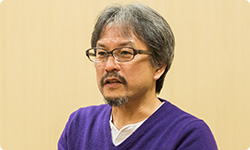
At that point you’d give up.
Yeah. There even are some things where there are no hints at all. There were quite a few things that no one was able to find.
As Miyamoto-san said, it feels like such a waste when no one can find and experience what you spent a lot of effort putting into the game.
Exactly. So thinking about it now, I must have been possessed at the time thinking what I’d done.
Sano-san, as one of the players, did you find those things in the game?
I think there were a lot. Like when you messed up something, you can accept that if it’s because your skill wasn’t good enough. But with that game there were parts where you didn’t know why you couldn’t clear certain areas. That made it hard to come to terms when you failed a challenge.
“When something didn’t work out, it’s easy for players to admit that it’s their own fault.” That’s the way games should be, and that should be the development philosophy here at Nintendo.
You’re right. But that wasn’t always the case with the Nintendo 64 version. It probably wouldn’t be a good idea if we had today’s player try out the original version. So that’s why we decided to make a “what in the world” list.
So you decided to make a list of everything that made Aonuma-san say, “What in the world?!”
That's right.
© 2024 Nintendo.